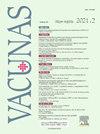脊髓灰质炎:一种典型疾病,已被消灭。根除的后遗症和挑战
Q3 Medicine
引用次数: 0
摘要
小儿麻痹症是公共卫生史上最具代表性的病例之一。它的最大影响发生在20世纪上半叶,毁灭性的流行病爆发,每年造成50万例病例,数万人死亡,此外还使许多幸存者永久瘫痪。科学界以模范的方式作出反应,研究小儿麻痹症,直到研制出两种有效的疫苗:一种灭活疫苗(Salk, 1955年)和一种减毒疫苗(Sabin, 1962年)。根据国际合作、明确的免疫战略和流行病学监测,立即组织了全球应对行动。1988年以来通过全球根除脊髓灰质炎行动开展的大规模疫苗接种工作使病例减少了99.9%。目前,野生脊髓灰质炎病毒仅在阿富汗和巴基斯坦存在,GPEI的“2022-2026年根除战略”已经实施,希望在未来几年内证明其完全根除。仍然存在两项重大挑战:控制由疫苗衍生脊髓灰质炎病毒引起的疫情,以及提高某些地区低免疫覆盖率。本文章由计算机程序翻译,如有差异,请以英文原文为准。
Poliomielitis: enfermedad paradigmática y eliminada. Secuelas y retos para la erradicación
Polio represents one of the most emblematic cases in the history of public health. Its greatest impact occurred during the first half of the 20th century, with devastating epidemic outbreaks that caused half a million cases annually with tens of thousands of deaths, in addition to leaving many survivors permanently paralyzed. The scientific community responded in an exemplary manner by studying polio until they developed two effective vaccines: an inactivated vaccine (Salk, 1955) and an attenuated vaccine (Sabin, 1962). A global response was immediately organized based on international cooperation, well-defined immunization strategies, and epidemiological surveillance. The mass vaccination effort carried out since 1988 through the Global Polio Eradication Initiative (GPEI) managed to reduce cases by 99.9%. Currently, the wild polio virus only persists in Afghanistan and Pakistan, and the GPEI's “Eradication Strategy 2022–2026” has been implemented with the hope of certifying its complete eradication in the coming years. Two significant challenges remain: controlling outbreaks caused by vaccine-derived polioviruses and increasing low immunization coverage in certain regions.
求助全文
通过发布文献求助,成功后即可免费获取论文全文。
去求助
来源期刊

Vacunas
Medicine-Infectious Diseases
CiteScore
3.90
自引率
0.00%
发文量
138
审稿时长
62 days
期刊介绍:
Sin duda una de las mejores publicaciones para conocer los avances en el campo de las vacunaciones preventivas, tanto en el ámbito de la investigación básica como aplicada y en la evaluación de programas de vacunaciones. Su alta calidad y utilidad la ha llevado a estar indexada en los prestigiosos índices IME y SCOPUS.
 求助内容:
求助内容: 应助结果提醒方式:
应助结果提醒方式:


